Monday, January 14, 2013
Mark and Gaz
I was meaning to remove and tidy these pots of succulents over the weekend but some of them look like they are still alive...
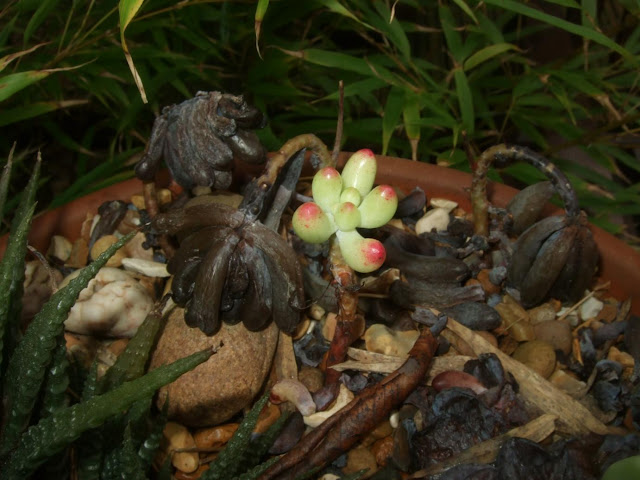 |
| Sole survivor....if this tiny cluster lives and sails through winter, it's definitely going to be saved (and re-rooted!) |
All of them were excess spare plants that I had used for a summer display but instead of removing them in the autumn, I opted to keep them out as they would remain looking good until the first hard frosts and freezes hit them (or kill them rather), after which I could tidy them up. So far they have stayed good right until early December when we experienced temperatures that dipped down to -6C. Once they had defrosted the damage gradually became more visible.
 |
| Haworthia attenuata, Graptoveria, and Echeveria runyonii 'Topsy Turvy' |
 |
| Agave parryi var. truncata, Agave victoriae-reginae, Kalachoe tomentosa |
So it was just a matter of taking the time to remove them at any point afterwards but when I saw that some are showing signs of survival, I opted to delay their removal until much later on to see which ones may actually sail through the winter. It's going to be my mini experiment.
Despite looking intact some of them are definitely dead like the Haworthia attenuata and Graptoveria, whilst the Kalanchoe tomentosa are neither intact nor alive, it is well and truly mushed. The Agave lophantha I was a little surprised with, although I wasn't expecting it to be that hardy, a relatively short cold snap has caused it so much damage.
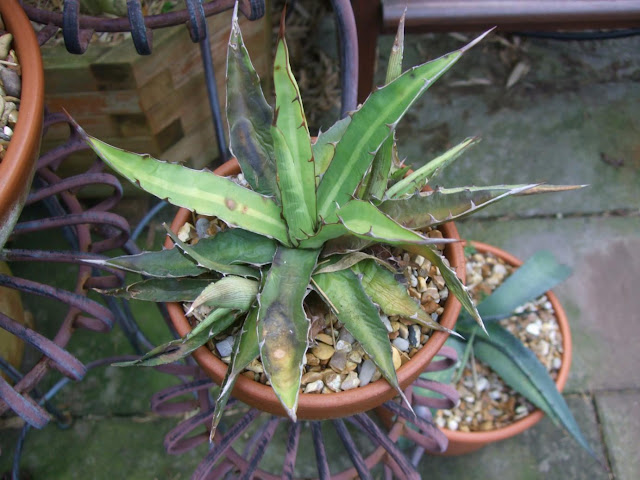 |
| Agave lophantha |
As for the others: a very small Agave victoriae-reginae, alive but severely damaged; Agave scabra which only has a few marks; Echeveria runyonii 'Topsy Turvy' with the outer leaves mushed but the centre looks intact; and a supposedly Agave parryi var. truncata, the star performer of the lot and is very promising for despite its small size it looks virtually untouched by the cold weather.
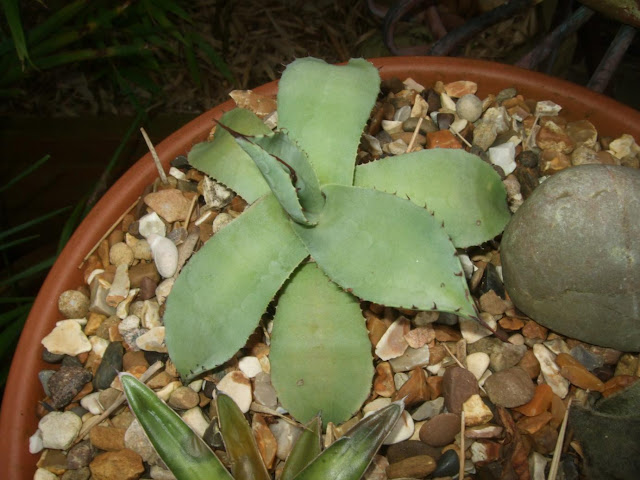 |
| This tiny Agave parryi var. truncata is telling me something (that it's tougher than it looks and wants to stay..) |
 |
| Agave scabra |
The Echeveria 'Topsy Turvy' is one of the hardier echeverias around and we used to have a patch of it, thriving and spreading out on a sunny and gravelled part of our garden and was never given any extra protection during winter. Alas winter 2010-11 was a very harsh one and it was only then that they perished. So it wasn't much of a surprise that this one on the dish is still looking mostly fine. I just hope the temps don't get any colder than it has been this winter already.
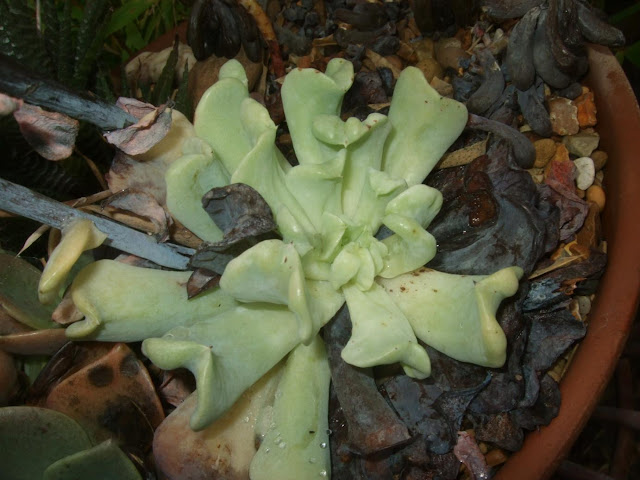 |
| Echeveria runyonii 'Topsy Turvy' |
For now I'm leaving them all as it is and will wait and see what they will be like come spring. All survivors will definitely be kept then, for they would have proven they are definitely worth keeping!
Mark :-)

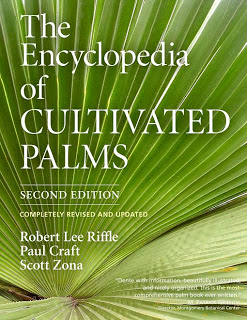

 This gardening blog follows our journey as we create our Tropical and Exotic themed garden. We hope you'll enjoy the journey as much as we do. We started our Exotic Garden in 2005 and this site will show its development, as well as our travels, both abroad and within the UK to gardens, nurseries and friends.
This gardening blog follows our journey as we create our Tropical and Exotic themed garden. We hope you'll enjoy the journey as much as we do. We started our Exotic Garden in 2005 and this site will show its development, as well as our travels, both abroad and within the UK to gardens, nurseries and friends.
